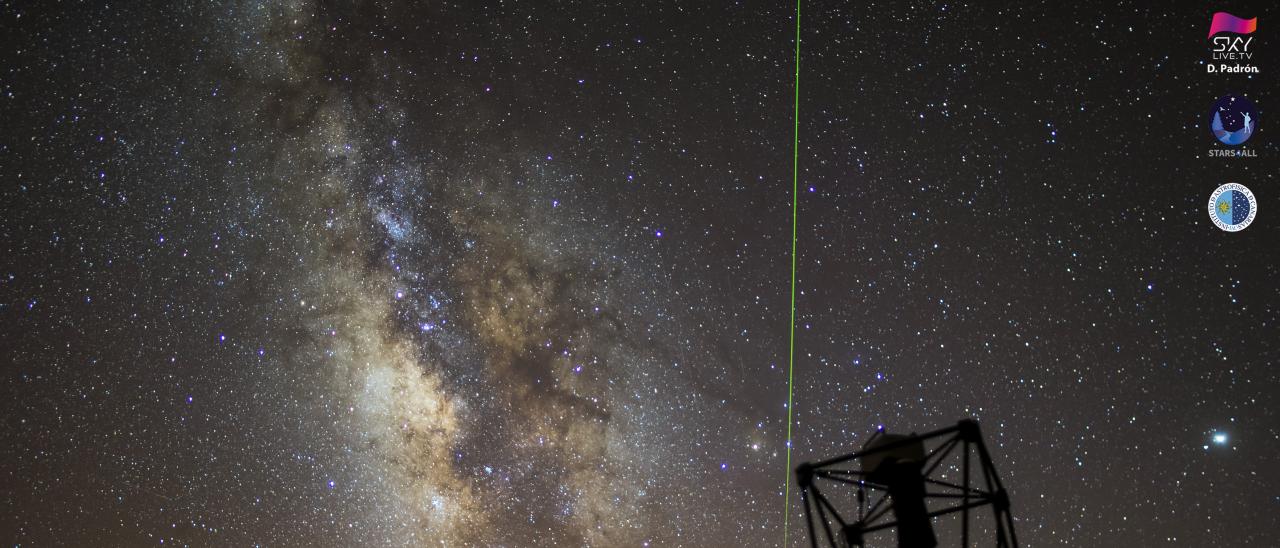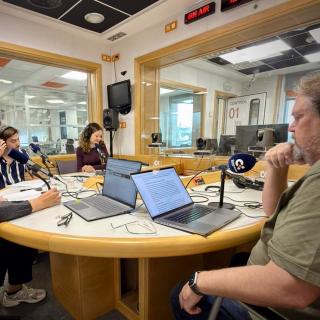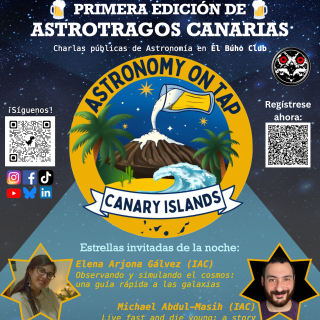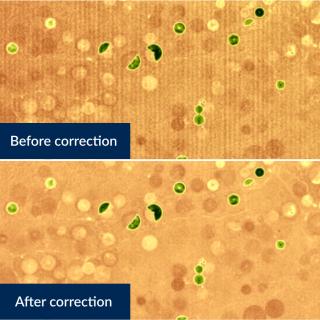On the nights of August 12th and 13th we will be able to get maximum enjoyment of the Perseids. They will be broadcast live from the Observatory of Oukaimeden (Morrocco) on the sky-live.tv channel on the night of august 12th with the collaboration of the European project STAR4ALL, and from the Instituto de Astrofísica de Canarias (IAC). In addition the citizen science project “Star counters” financed by the Spanish FECYT, will offer an observation proposal for the whole family.
The Perseids, also known as “Saint Laurence’s Tears” will be at the peak of their activity towards the middle of August, as they do every year. For 2019 the activity of the Perseids started on July 17th and will carry on until August 24th. The maximum is expected at 6:58 UT on August 13th. In Europe the nights of the 11th, 12th and 13th of August will show the maximum of activity of this meteor shower. However this year an almost full moon will make observing the fainter meteors very difficult. The best time to observe them will be in the small hours of the morning on August 13th, just before dawn, when the Moon will have set.
Miquel Serra-Ricart, an astronomer at the IAC explains “This year the early risers will get their reward. The date will be in the small hours of August 13th. If we get up at 6 in the morning and go to a place without light pollution or clouds there is sure to be a spectacle. As always we have to be patient. In a period of 10 minutes we will certainly see tens of them if we fix our view at a single point in the sky”.
A shower with a history
So-called “shooting stars” are really tiny particles of dust of various sizes, some smaller than grains of sand, which the comets, or asteroids, leave behind along their orbits around the Sun. The resulting cloud of particles, (called meteoroids) produced by the thawing effect of the Sun’s heat, are dispersed around the orbit of the comet, which is crossed every year by the Earth in its orbit round the Sun. During this crossing the dust particles disintegrate when they enter the Earth’s atmosphere at high speed, causing the well-known bright trails which have the scientific name of meteors.
The activity of the Perseids, which originate in the comet Swift-Tuttle, discovered in 1862, and with a current size of some 26 km in diameter, is the largest object which periodically approaches the Earth. We know, from the calculations of accepted models, that the activity of the Perseids is around 100 meteors per hour (ZHR, zenith hourly rate)
Counting stars in the family
During all meteor showers amateur astronomers take counts of the meteors and send them to the International Meteor Organization (IMO) to calculate the rates of activity of the showers. For the Perseids of 2019 the Instituto de Astrofísica de Canarias (IAC) and the Polytechnic University of Madrid (UPM) have joined forces within the citizen science project Star Counters www.contadoresdeestrellas.org/), funded by the FECYT (Spanish Foundation for Science and Technology, and have devised an educational activity so that anyone of the general public can take part in these counts. The guía(guide) describes the procedure to follow using a set of apps, which have to be previously installed in one’s cellphone and with some very basic additional material. The challenge is to get the general public to paticipate in a simple manner and understand this astronomical phenomenon, as well as other interesting sky events described in the guide. The idea is for this to be carried out in a family group or in a small team, since the event coincides for most people with holiday time, and it is customary for members of the public to go outside to observe.
The Sky Radio
Although meteor showers are associated with the night, they are phenomena which also occur during the day. For those who want to enjoy the spectacle at any time without worrying about the meteorological or lighting conditions, Star Counters offers a radio station (http://www.contadoresdeestrellas.org/estaciones/) at which any member of the public can listen to any shooting star, thanks to an antenna at the Astronomical observatory of the Astronomical Group of Madrid South (AAMS). This idea is to make astronomy accessible to the blind or to anyone with impaired vision, who will in this case be able to hear the amazing sounds from the sky.
Live form the Oukaimeden Observatory
Within the framework of the Light Pollution Initiatives (LPI) of the European STAR4ALL project (stars4all.eu) the sky-live.tv channel will broadcast live the meteor shower from the Oukaimeden Observatory in the heart of the Atlas Mountains in Morocco.
The date is next Monday, August 12th at 23.15 UT (13th Aufust 00:15 local time in the Canaries and in Morrocco; 01:15 CEST, local time in most of Europe.
Star Counters is a project financed by the Spanish Foundation for Science and Technology (FECYT) of the Ministry of Science, Innovation and Universities.
STARS4ALL is a project financed by the H2020 programme of the European Union under agreement number 688135. STARS4ALL involved 8 institutions instituciones (UPM, CEFRIEL, SOTON, ECN, ESCP Europe, IAC, IGB, UCM) from 6 countries
Three Spanish supercomputing centres el Centro Extremeño de Tecnologías Avanzadas (CETA-CIEMAT), the Consorci de Serveis Universitaris de Catalunya (CSUC) and the Instituto de Astrofísica de Canarias (IAC) are collaborating in the boradcast of the web portal (sky-live.tv).
Didactic material
- Star Counters: http://www.contadoresdeestrellas.org/
- Guide for Star Counters: https://t.co/zWiRtBRFPf
Audiovisual material
Sequences of the best of the Perseids 2016 and 2018 from the Teide Observatory
High resolution images of meteor showers: https://www.flickr.com/photos/65131760@N06/sets/72157634760969777/



